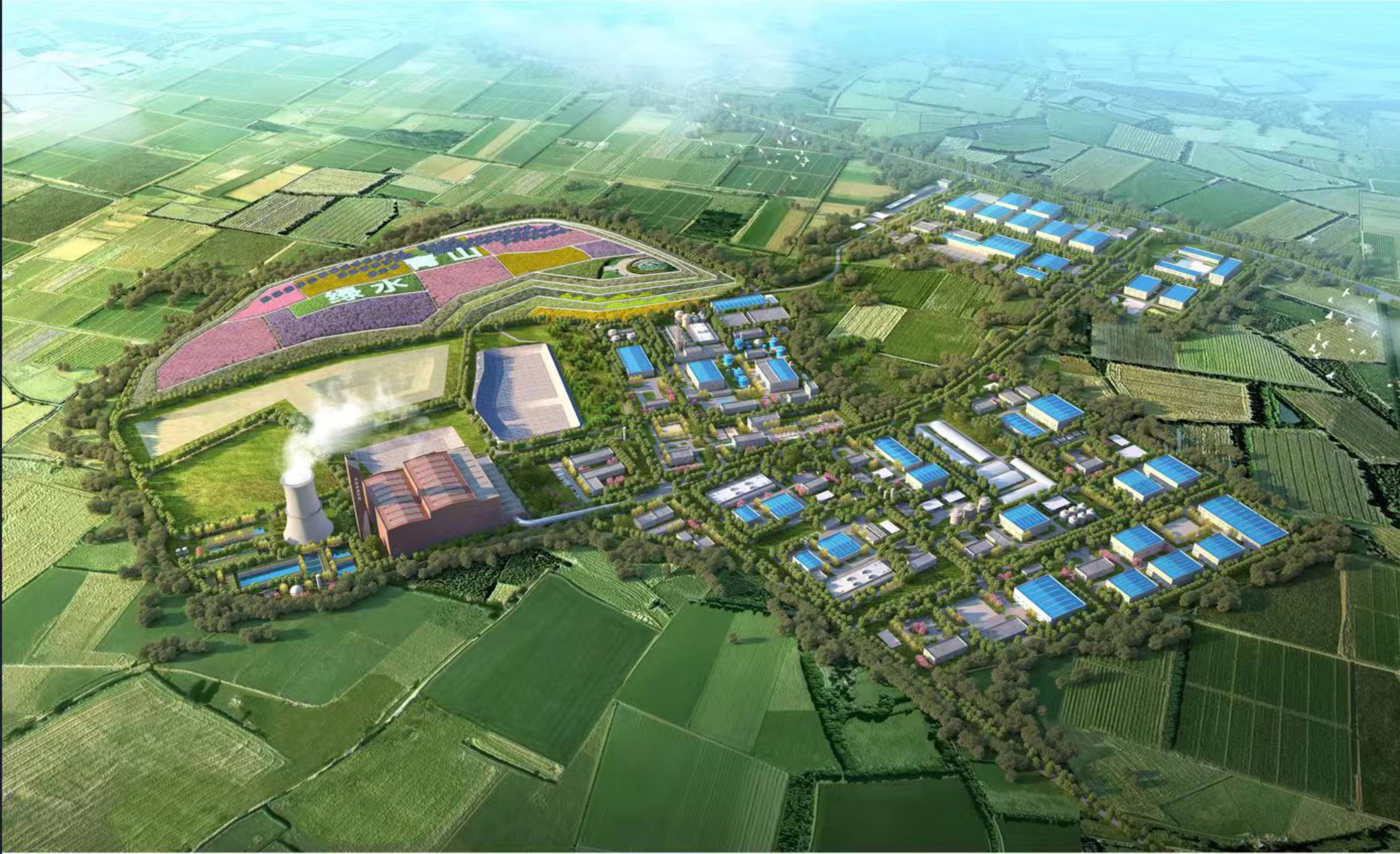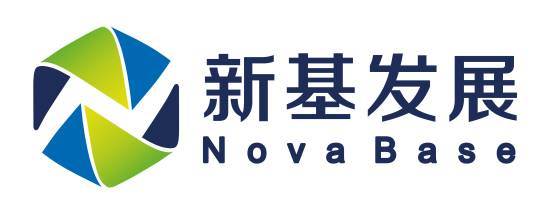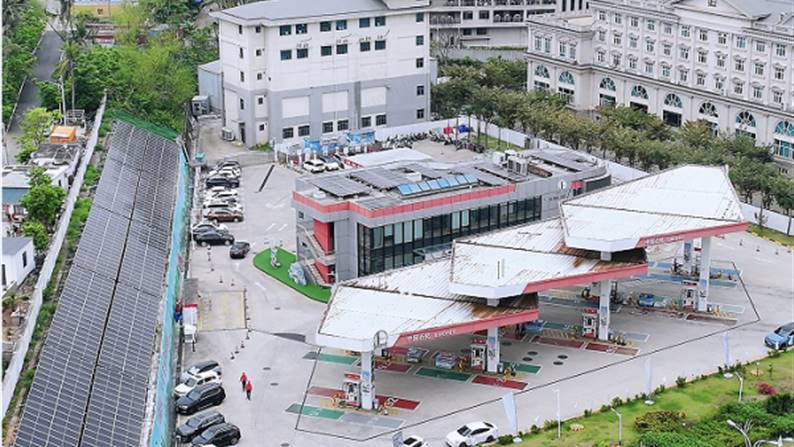

Project Overview
案例概述
The project was officially launched in 2024 and is located in the Laohuchong Circular Economy Industrial Park in Shenyang City. Its core mission is to promote the circular economy and implement the concept of low-carbon and environmental protection. The park has established a full-chain system covering collection, transportation, treatment and resource utilization by systematically integrating and collaboratively processing various solid wastes such as household garbage, kitchen waste and leachate, achieving efficient material circulation and energy cascade utilization. The project adopts advanced international technologies such as incineration power generation, anaerobic fermentation and deep leachate treatment, ensuring harmless treatment while significantly enhancing resource regeneration efficiency and energy output. Currently, the park processes a total of 1.4 million tons of solid waste annually, generates over 400 million kilowatt-hours of electricity annually, and has a stable reclaimed water reuse rate of 80%. It can reduce about 400,000 tons of carbon dioxide emissions annually. This project not only significantly improves the local environmental quality but also provides a replicable and scalable practical model for the green and low-carbon transformation of the solid waste treatment industry in Northeast China and even the whole country, becoming an important benchmark for regional green and high-quality development.
项目于2024年正式启动,坐落于沈阳市老虎冲循环经济产业园,以推动循环经济与落实低碳环保理念为核心使命。园区通过系统整合与协同处理生活垃圾、餐厨垃圾、渗滤液等多种固体废物,构建了覆盖收集、运输、处理及资源化利用的全链条体系,实现了物质的高效循环和能量的梯级利用。项目采用国际领先的焚烧发电、厌氧发酵、渗滤液深度处理等先进技术,在确保无害化处理的同时,极大提升了资源再生效率和能源产出水平。目前,园区年处理固体废物总量达140万吨,年发电量超过4亿度,中水回用率稳定在80%,每年可实现二氧化碳减排约40万吨。该项目不仅显著改善了当地环境质量,也为东北地区乃至全国固废处理行业的绿色低碳转型提供了可复制、可推广的实践样板,已成为区域绿色高质量发展的重要标杆。

Company/Organization Profile
机构简介
Shenyang Tuerchong Zero-Carbon Circular Economy Industrial Park, under the Shenyang Xiji Development Co., Ltd., is a demonstration park that actively responds to the national "dual carbon" strategy and promotes green and low-carbon development. The park covers an area of approximately 1,500 mu and is committed to building a circular economy system centered on solid waste treatment, integrating resource recovery, energy regeneration, and carbon sink management. Several environmental protection projects, such as waste incineration power generation, food waste treatment, leachate treatment, and biogas power generation, have been completed. The park processes over one million tons of various solid wastes annually, achieving green electricity supply and resource recycling. The park aims to build a "zero-carbon circular economy industrial base" leading in Northeast China and ranking among the top in the country through industrial collaboration, energy cascade utilization, and intelligent management.
沈阳市新基发展有限公司旗下的沈阳市老虎冲零碳循环经济产业园,是积极响应国家“双碳”目标、推动绿色低碳发展的示范园区。园区规划总面积约1500亩,致力于打造以固废处理为核心,集资源回收、能源再生、碳汇管理于一体的循环经济体系。现已建成生活垃圾焚烧发电、餐厨处理、渗滤液处理、沼气发电等多个环保项目,年处理各类固废超百万吨,实现绿电供应与资源循环利用。园区以“无废城市”建设为目标,通过产业协同、能源梯级利用和智慧管理,努力建设成为东北地区领先、全国一流的零碳循环经济产业高地。

Project Outcome
项目成果
1. Processes 1.4 million tons of waste annually, generating 400 million kWh of electricity;
2. Reuse rate of reclaimed water reaches 80%, significantly saving water resources;
3. Reduces CO₂ emissions by 400,000 tons per year, equivalent to saving 160,000 tons of standard coal;
4. Recognized as "National AAA Tourist Attraction" and "Waste Classification Education Base";
5. Hosts 2,500 visitors annually, enhancing public environmental awareness.
1. 年处理固废140万吨,发电4亿度;
2. 中水回用率80%,年节约水资源显著;
3. 年减排CO₂40万吨,相当于节约标煤16万吨;
4. 年获“国家AAA级旅游景区”“生活垃圾分类教育基地”等荣誉;
5. 年接待参观2500人次,提升公众环保意识。
Project Highlights
项目亮点
This project gives full priority to the utilization of existing solid waste resources in the park, building a three-level recycling system of "large, medium and small" to achieve energy efficiency improvement and carbon emission reduction. It has been awarded the title of "2025 Green and Low-Carbon Typical Case" by the National Ministry of Ecology and Environment, being the only park selected in Northeast China and enjoying policy preferences and financial support. Government leaders have conducted multiple research visits and highly recognized it, encouraging it to become a benchmark for the regional environmental protection industry. Users have provided feedback that the resource synergy benefits are significant, and it has replicable and scalable value.
本项目充分优先利用园区既有固废资源,构建“大中小”三级循环体系,实现能效提升与碳排降低。获国家生态环境部“2025绿色低碳典型案例”,是东北唯一入选园区,享有政策倾斜与金融支持。政府领导多次调研并高度认可,鼓励其成为区域环保产业标杆,用户反馈资源协同效益显著,具备可复制推广价值。
Project Implementation
项目实施
The implementation of the Zero-Carbon Park Project in Shenyang Laohuchong Circular Economy Industrial Park is guided by the national "dual carbon" strategy, focusing on six major directions: energy efficiency benchmarking, clean production, zero-carbon energy, green facilities, resource recycling, and digitalized management. The project is systematically advancing the zero-carbon transformation of the park. The implementation is divided into three phases: short-term (2025-2030), medium-term (2031-2035), and long-term (2035-2050). It focuses on the layout of industries such as solid waste resource utilization, new energy green power, hydrogen energy, waste heat utilization, and carbon capture and storage (CCUS), and builds a zero-carbon ecological industrial system characterized by "solid waste as the foundation, green power as the starting point, hydrogen energy as the hub, and services as the link".
沈阳市老虎冲循环经济产业园零碳园区项目实施以国家“双碳”目标为指引,围绕“能效标杆化、生产清洁化、能源零碳化、设施绿色化、资源循环化、管理数智化”六大方向,系统推进园区零碳转型。项目实施分为近期(2025–2030)、中期(2031–2035)和远期(2035–2050)三个阶段,重点布局固废资源化、新能源绿电、氢能、余热利用、固碳碳汇等产业,构建“固废为基础、绿电为起点、氢能为枢纽、服务为纽带”的零碳生态产业体系。
Implementation Plan and Process: The project integrates existing facilities such as waste incineration, kitchen waste treatment, and biogas power generation, and gradually expands demonstration projects such as integrated wind-solar-storage, green power hydrogen production, waste heat coupling with papermaking, greenhouse agriculture, and carbon capture and utilization (CCUS). During the implementation process, a three-level circular system of "large, medium, and small" is established to achieve closed-loop management of energy flow, material flow, and carbon flow. For example, the waste heat from incineration is used to supply heating and papermaking for the surrounding areas, biogas and photovoltaic green power are directly supplied to park enterprises, garden waste is used to produce LNG, and dry ice is used to capture CO₂, etc., to comprehensively enhance resource efficiency and carbon sink capacity.
实施方案与过程:项目通过整合现有垃圾焚烧、餐厨处理、沼气发电等设施,逐步拓展风光储一体化、绿电制氢、余热耦合造纸、温室农业、碳捕集利用(CCUS)等示范项目。实施过程中建立“大-中-小”三级循环体系,实现能流、物质流、碳流闭环管理。例如,利用焚烧余热供应周边采暖与造纸,沼气和光伏绿电直供园区企业,园林垃圾制备LNG,干冰捕集CO₂等,全面提升资源效率与碳汇能力。
Comparison Before and After Implementation and Challenges Overcome: Before implementation, the park mainly focused on traditional solid waste treatment, with an energy structure dependent on fossil fuels and high carbon emission intensity. After implementation, a multi-energy complementary and industrial coupling zero-carbon system is formed. It is expected that carbon emissions will be controlled at 200,000 tons of CO₂ by 2030 and carbon neutrality will be achieved by 2050. The project has overcome several challenges: first, the demand for land expansion (5,000 mu), which was solved through comprehensive land consolidation, reclamation of abandoned mining land, and adjustment of basic farmland and urban development boundaries; second, grid transformation and microgrid construction, with support from the State Grid to adjust high-voltage corridors; third, technology integration and financial pressure, relying on government policy preferences, green credit, zero-carbon industry funds, and international financial support to ensure the phased implementation of the project.
实施前后对比与挑战克服:实施前,园区以传统固废处理为主,能源结构依赖化石能源,碳排强度高。实施后,形成多能互补、产业耦合的零碳体系,预计2030年碳排控制在20万吨CO₂,2050年实现碳中和。项目克服了多项挑战:一是用地扩张需求(新增5000亩),通过全域土地综合整治、废弃矿地复垦、基本农田与城镇开发边界调整等方式解决;二是电网改造与微电网建设,获得国家电网支持调整高压走廊;三是技术集成与资金压力,依托政府政策倾斜、绿色信贷、零碳产业基金及国际资金支持,保障项目分期落地。
Internal and External Support: Internally, it relies on the leading role of Xinji Development and existing infrastructure advantages to form a cluster effect. Externally, it has received high-level coordination from the Shenyang Municipal Government and collaborative promotion from various departments, and has been included in the territorial space planning. It has also obtained the endorsement of demonstration projects from the Ministry of Industry and Information Technology and the Ministry of Ecology and Environment, enhancing brand influence and investment attraction. The Sujiatun District Government has provided preferential policies in land acquisition and procedure handling to accelerate project implementation.
内外部支持:内部依托新基发展龙头带动和已有基建优势,形成产业集群效应;外部获得沈阳市政府高位统筹、各部门协同推进,纳入国土空间规划,并争取到国家工信部、生态环境部示范项目背书,增强品牌影响力与招商吸引力。苏家屯区政府在土地购置、手续办理等方面提供优惠政策,加速项目落地。
Project Impact & Sustainability
项目影响力、可推广性与可持续性
This zero-carbon industrial park planning project has significant influence, scalability and sustainability. Guided by the "dual carbon" goals, the project achieves energy structure optimization and resource recycling through technological innovations such as direct supply of green electricity, waste heat coupling, CCUS carbon capture, and hydrogen energy production. It has strong technological demonstration and mechanism innovation capabilities. The park builds a "large, medium and small" three-cycle system, promoting the deep integration of solid waste treatment, new energy, and carbon sink industries, which plays an important role in promoting the development of a circular economy and zero-carbon industrial parks in Northeast China and even the whole country. The project is planned to be implemented in three phases, covering 51 key projects with a total investment of over 20 billion yuan. In the future, it will continue to expand green electricity capacity, extend the industrial chain, and implement intelligent management to ensure the economic viability and environmental benefits of long-term operation, and has good replicability and sustainable development capabilities.
本零碳园区产业规划项目具有显著的影响力、可推广性与可持续性。项目以“双碳”目标为引领,通过技术创新如绿电直供、余热耦合、CCUS碳捕集、氢能制备等,实现能源结构优化与资源循环利用,具备较强的技术示范性和机制创新性。园区构建“大中小”三循环体系,推动固废处理、新能源、碳汇等产业深度融合,对东北乃至全国循环经济与零碳园区建设具有重要推动作用。项目规划分三期实施,涵盖51个重点项目,总投资超200亿元,后续将持续推进绿电扩容、产业链延伸与智能化管理,确保长期运营的经济性与环境效益,具备良好的可复制性和可持续发展能力。
(Using AI translation)
(使用AI翻译)

零废弃学校建设之厨余垃圾篇
10-24 · 来源:中国浙江省宁波市鄞州第二实验中学 · 作者:中国浙江省宁波市鄞州第二实验中学

能源至净,生活至美,积极打造碳中和
10-24 · 来源:中国石化销售股份有限公司海南海口石油分公司 · 作者:中国石化销售股份有限公司海南海口石油分公司

无锡中瑞低碳生态城
10-23 · 来源:无锡中瑞低碳生态城 · 作者:无锡中瑞低碳生态城